#plant dye
Text
The logwood came yesterday, I pured boiling water over it (20g). Let that soak for 24 hours (approximately) and boiled it for 3 hours.
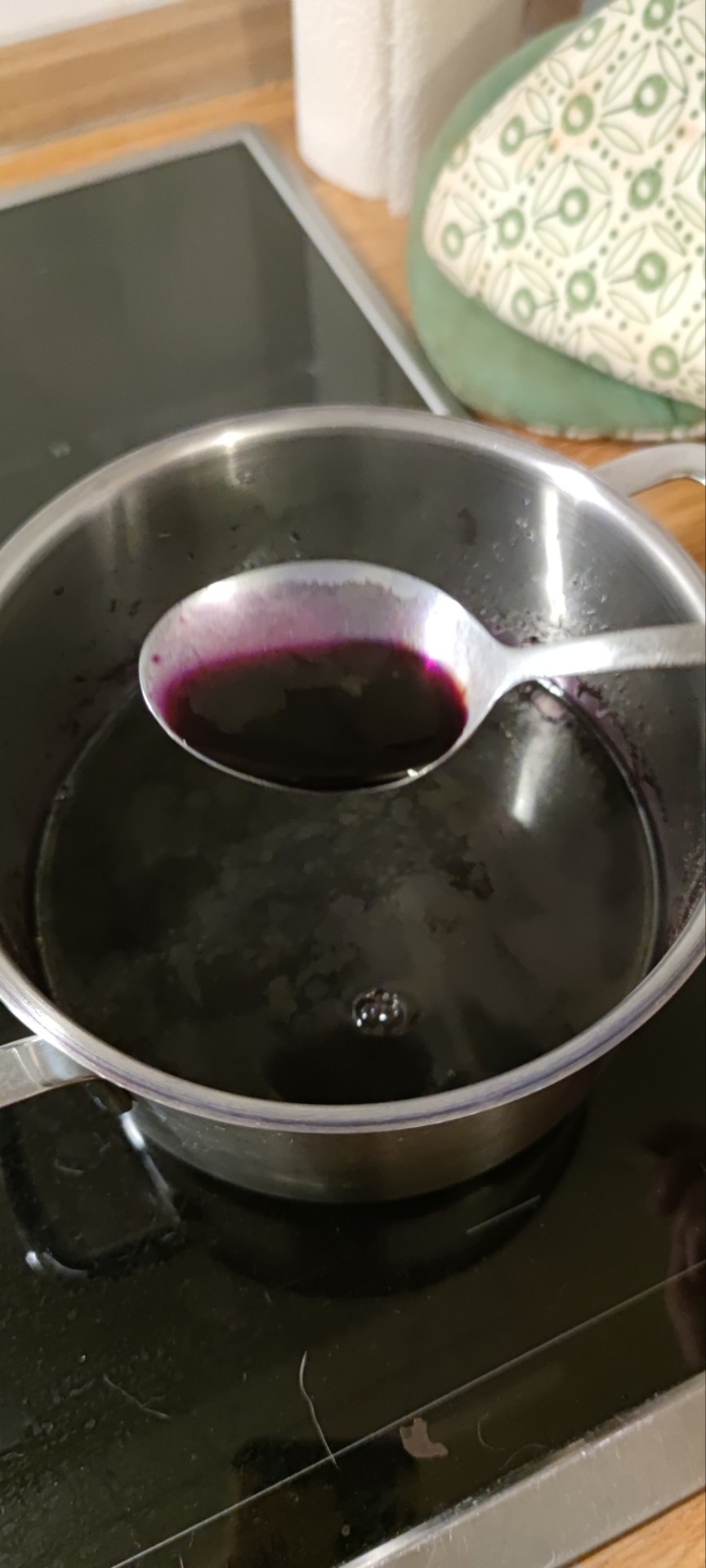
Look at the richness and color!!!!
This is supposed to dye 100g of wool lavender, I'll report back tomorrow!
840 notes
·
View notes
Text



cotton samples dyed with white dead-nettle (lamium album) !! cooler toned fabrics are just dead-nettle, the warmer brownish scraps had been pre-dyed yellow with pomegranate rinds
this was a very small experiment to confirm whether dead-nettles yielded dye as their stinging cousins 🌿 the extraction process lasted two days and 3 steepings (although i believe two steepings would've been enough!)
my partner said these look a bit like bog finds :'^) love that comparison
#natural dye#plant dye#white nettle#dead nettle#lamium album#textiles#tinturaria#maker's diary#(pls ignore the scan quality ! my scanner started to blast the saturation and contrast of images so it needs to be tweaked a little)#laurus
79 notes
·
View notes
Photo
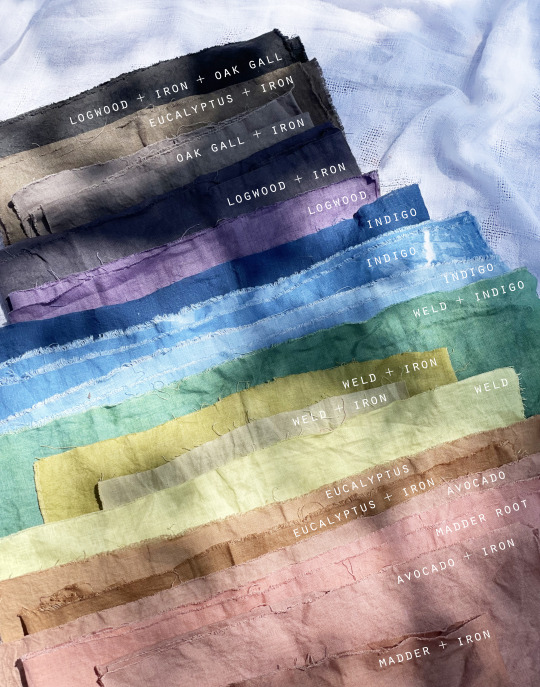
color library volume 1
116 notes
·
View notes
Text
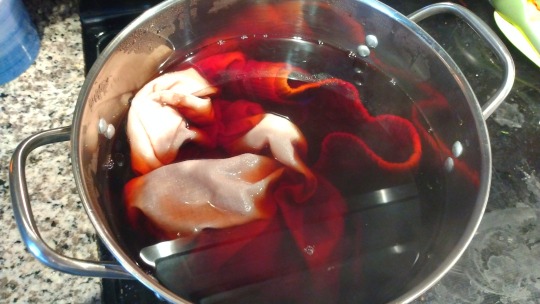
bought a pair of white pants recently, they're a linen blend so I figured I'd give dyeing them a shot.
dyeing with an ounce of powdered wattle/acacia to about a pount of fabric. I wasn't expecting much, but so far it's a really nice dusty pink.
8 notes
·
View notes
Text
Looking for a petty textile summer project? Why not try ✨invasive species plant dyeing!✨
So in the Nordic states we have a lupine problem

Lupines are gorgeous, native to North America, and very invasive in Northern Europe. They have spread from people’s gardens into every ditch along any road.
On a different, but related note, the Finnish national crafting association Taito have made the focus craft of 2022 natural plant dyeing of textiles!
Where do these two facts intersect? Well, lupines can be use for dyeing of course!
According to my sources (strangers on the internet) the leaves might give a greenish yellow, and the flowers a blue or green.
So if you’re in the Nordics pull some lupine up by the root before they have a chance to seed! And if you’re in California save the lupine, since it’s endangered.
https://www.taito.fi/sv/hantverksnyheter/aretshantverksteknik2022/
71 notes
·
View notes
Photo


Some 100% wool yarn that I dyed this last autumn and only recently washed and balled up.
The plan is to make them into socks and see how well 100% wool can actually hold up.
15 notes
·
View notes
Text
I realized I never started sharing my hand dying escapades in here. Get ready for some instagram-ass ready photos y'all.
(also FYI I'm getting most of my info/methods out of the book Wild Color from Jenny Dean)
I also got a boatload of marigolds from my mom's place, and thought you know what would be cool? Making my mom a cowl dyed in her own marigolds!!! So let the experiments begin.

I knew there was a reason I kept those random broken screens...
I followed the instructions in the book and either I did my math wrong, the book is wrong, or these are some POTENT ASS marigolds because I just used a tiny fraction of what's shown above and have dye for days. It colored way more tests than I have shown in this post and it STILL is loaded with dye potential. I think it led to some of my tests coming out SUPER dark.


None of the tutorials SUGGESTED it, but my project only junker slow cooker worked super well. But oh boy. The smell... Like microwaving pumpkin baby food. SO glad it was in the garage.
At first I was really optimistic about my results on cotton, but it seems like as it dries it oxidizes and turns brown? Or something? I also tried some modifiers! The base/acid changes were...negligible, but the iron was extremely cool.


The WOOLS though. Turned out beautiful. The hanks from left to right are a vintage 100% wool+alum mord, the extra tiny hank is superwash merino/nylon with alum mord, cotton with tannin+alum dipped in iron, cotton with alum only, cotton with tannin and alum, and cotton with iron mord. It's so hard to pick up the colors well in photos.

Tried cool dyeing the cotton on the left two most shades on the big swatch, it looks nicer in photos than in person. I don't hate the color but I know they fall into the genre my mom considers "baby poop." If only I could just use the wool.......Then I remembered silk is a thing, and I have some undyed silk fabric.
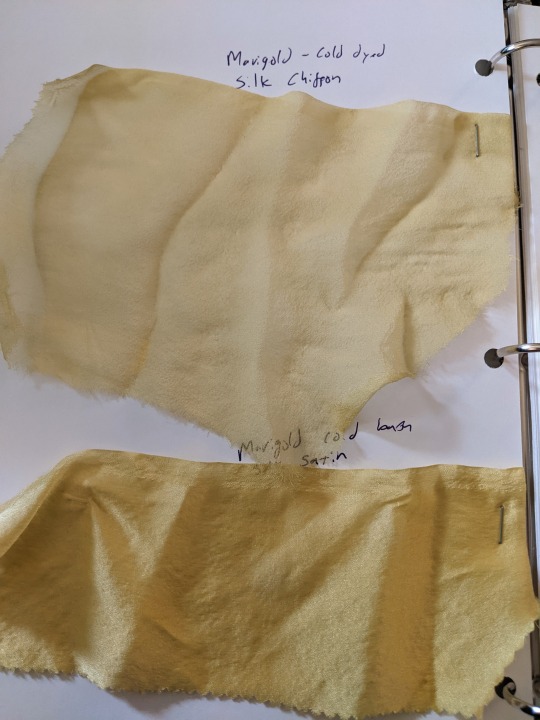
Yep, might be making a silk cowl at this rate. More tests are in order but I need a break from yellow, and my buckets of soaking plum and cherry bark are starting to get real nasty... so we'll see how those go!
26 notes
·
View notes
Photo
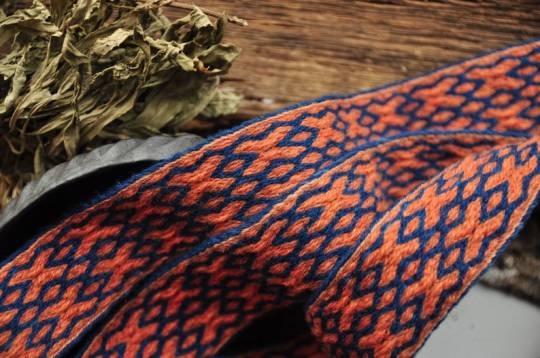
ForestsandMeadows on etsy
8 notes
·
View notes
Text
Some more plant dye experiments!
Trying the technique for acid dye variegated yarn with plant dye!


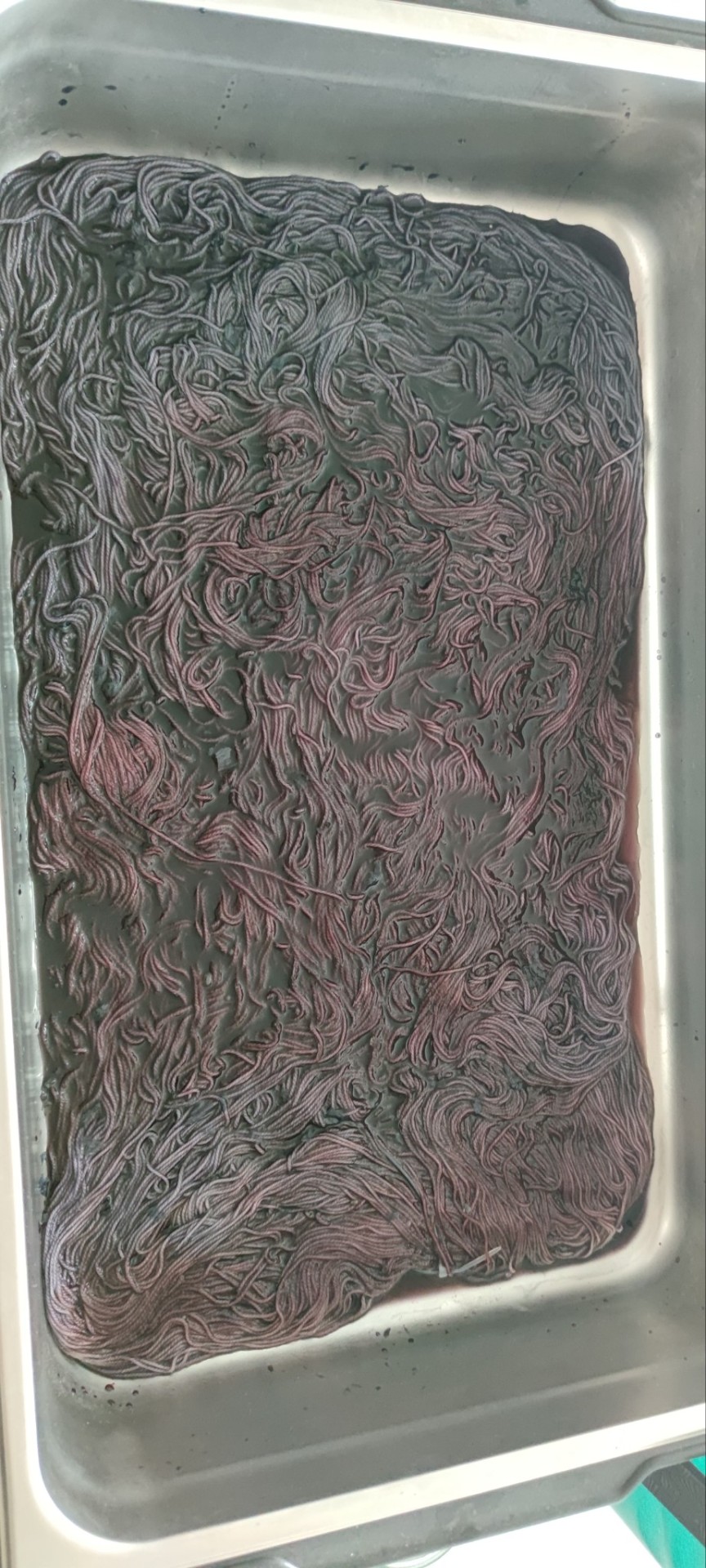
419 notes
·
View notes
Text



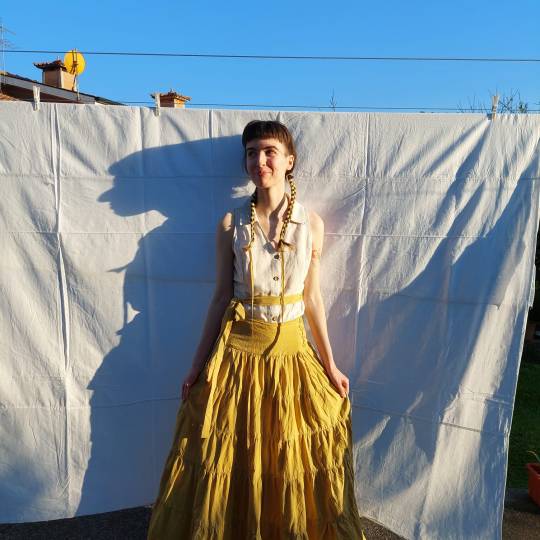
my first hand-dyed garment ☀️ this was an old white zara skirt that was forgotten in my mum's closet ! pulled the hem up a bit, changed the closure from a zipper to buttons & dyed it bright beautiful yellow with pomegranate rinds :^)
the leftover fabric was turned into ribbons for medieval hair taping (very nice to have matching ribbons!) and some scraps used for overdyeing with other plants at a later time
photos are from the sweet @magpieinavest after a wonderful day in their gran's garden 💛
#this was soooo fun to do and makes me want to dye everything yellow !!#plant dye#natural dyes#maker's diary#also my first upcycled garment i think?#now omw to answer messages 🕯 its been a struggle lately lol
64 notes
·
View notes
Text
Naturfarben Experiment
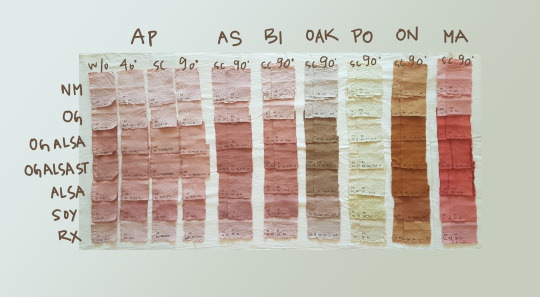
Cretonne 100% Baumwolle rohweiss 150g/m2 1m60x1m = 240g
Ziel war es unterschiedliche Vorbereitungsarten und Beizverfahren für Baumwolle ausprobieren und ihre Auswirkung auf die mir momentan zur Verfügung stehenden Pflanzenfarben sehen.
Entschlichtungsarten
w/o = Stoff ab Rolle, nicht gewaschen, nicht entschlichtet
40° = 40°Wäsche in Waschmaschine mit normalem Waschmittel
90° = 90°Wäsche in Waschmaschine mit Geschirrreiniger und Waschsoda 1% WOF (Verhältnis Boutrup&Ellis)
SC = scoured, entschlichtet nach Maiwa Beschreibung im Topf, Geschirreiniger 2.2% wof, 4.4% wof, 1h geköchelt, gespült.
Beizarten
NM - no mordant - ohne als Kontrolle
OG% - oak galls - Galläpfel (tannin only) nach maiwa - 15%wof
OG% + AL15%SA2% - 2schritt Prozess nach Maiwa mit Galläpfel und dann Kalialaun + Waschsoda
OG% + AL15%SA2% ST - 2schritt prozess nach maiwa mit galläpfel und dann kalialaun + waschsoda + steep (über Nacht drin liegen lassen 12h+)
AL15%SA2% - Kalialaun + Waschsoda (alum only) nach maiwa*
SOY%25 - sojamilch 25%wof (Sojamilch mit 7.5% Soja verwendet) nach Rebecca Desnos
RX%200 - sauerampfer (rumex acetosa) frische Blätter 200%wof nach Babs Behan die den Prozess für Rhabarberblätter beschreibt. Dabei wird aber genau der gleiche Bestandteil der auch in Sauerampfer vorkommt extrahiert: Oxalsäure. Sie beschreibt es explizit als Beizmittel für tierische Fasern, nicht pflanzliche.
*interessanterweise beschreibt India Flint diesen Vorgang, aber mit deutlich weniger Alaun (500g fibre 2TL(10g, 2%wof) Alum(kalialaun) 1TL(5g, 1%wof) Waschsoda. Dissolve each in warm water separately and add to 10l water. simmer fibre 1h, then allow to cool overnight. spin excess water out, dye or dry.) habe mich für den maiwa prozess entschieden, weil boutrup&ellis für zellulose nicht mit kalialaun arbeiten und babs behans prozess weniger simpel beschrieben ist.
Farben
MA Madder - Krapp - Rubia Tinctorum
ON Onion - Zwiebelschalen - Allium Cepa
OAK Oak leaves - Eichenlaub - Quercus x
AP Avocado pits - Avocadosteine - Persea Americana
AS Avocado skins - Avocadoschalen
BI Birch rind - Birkenrinde - Betula x
PO Pomegranate - Granatapfelschale - Punica Granatum
Färbprozesse
MA
100%wof Wurzelstückli
soaked roots 24h, then did a 1h extraction with temp maintained at 65°C
fabric soaked for 1h, then 1h dyeing at 65°
ON
100%wof getrocknete Zwiebelschalen war eine beängstigende Menge
schalen 1h geköchelt, stoff ebenfalls
stoff 1h eingeweicht
OAK
100%wof getrocknete Blätter mit Ästchen, Reste vom Sturm
blätter 1h geköchelt, stoff ebenfalls
stoff 1h eingeweicht
AP
100%wof (wollte 200%wof aber hab verkackt) 3 half-dry newish pits
ca. 20min aufgekocht, wasser komplett erneuert (wäre aber glaub nicht nötig gewesen war ein klares Orange da) und 1h30min geköchelt, abgegossen.
stoffstücke über nacht eingeweicht, aufgekocht und 1h geköchelt
AS
200%wof eine Menge getrocknete Schalen
ca. 20min aufgekocht, braungraues wasser komplett erneuert, 1h geköchelt, abgegossen.
stoffstücke über nacht eingeweicht, aufgekocht und 1h geköchelt
BI
100%wof getrocknete Birkenrindenspäne, ebenfalls Sturmreste von Ästen geschnitzt
soaked cold in plastic container 12h+
rinde aufgekocht, 1h geköchelt, stoff ebenfalls.
stoff ca 5h eingeweicht
PO
100%wof getrocknete Granatapfelschale
soaked in plastic container 12h+
aufgekocht, 1h geköchelt, stoff ebenfalls.
stoff ca 5h eingeweicht
Bemerkungen Prozess
Stoff ist beim Waschen ca. 10% eingegangen. Die 90° Wäsche hat den rohweissen Baumwollfarbton in ein hellweiss verwandelt bzw. den Gelbstich entfernt.
Feinabmessungen waren das alles nicht mit der Waage, die ich zur Verfügung habe.
Die ungebeizten Stoffstücke fühlen sich viel weicher und glatter an als die gebeizten.
OG hat einen gelblichbeigen Ton auf dem Stoff, OG ALSA leicht gräulicher, OG ALSA steeped deutlich gräulicher, wirkt beinah grünlich. das reine ALSA sample hingegen hat sich kaum verändert, ebenso wie das SOY. RX ist am Dunkelsten, ein sehr zartes hellbraun.
Zwiebelschale hat beim Spülen ordentlich abgefärbt.
Beim Einweichen der Stoffstücke haben die ALSA zunächst eine Art das Wasser von sich zu weisen, erst überziehen sie sich mit einem silbernen Schimmer. NM und OG nehmen das Wasser am schnellsten an. Bei allen anderen bilden sich zunächst kleine Bläschen am Stoff, bevor sie beginnen das Wasser aufzunehmen.
Beobachtungen Resultate
AP
W/O sind sehr steif, haben Farbe unregelmässig aufgenommen, ist aber zb bei NM auch am Dunkelsten geworden. Viele AP haben Abdrücke drauf. Lagen über Nacht beim Einweichen übereinander, das hat etwas gemacht mit ihnen, bzw haben sie sich gegenseitig bei Kontakt beeinflusst und die Farbresultate entsprechend verändert. Gut sichtbar bei NM zb, nicht sichtbar bei SOY. Die sind alle gleichmässig unregelmässig.

AS
Sehr gleichmässig. SC hat Flecken. Auch hier scheint ganz leicht die Ausgangsfarbe durch und macht die SC einen Tick wärmer. Viele haben auch Abdrücke. (ebenfalls über Nacht eingeweicht)
OAK
Hat die Farbe extrem schön gleichmässig aufgenommen! Stoff war 1h eingeweicht. Sehe keinerlei Unterschied zwischen SC und 90° bis auf Nuance. SC ist etwas heller, fröhlicher (gelblicher) und 90 eeetwas aschiger. Sogar SOY ist relativ gleichmässig! (für soy)
ON
Kaum Unterschiede zwischen 90° und SC, SC hat teils Flecken die nicht perfekt sind, erscheint mir aber auch einen Tick vibrierender/tiefer? zb ALSA, OG ALSA ST. Wobei ALSA glaube ich auch einen Abdruck hat. SOY ist sehr unregelmässig, 90° weniger als SC. Alle anderen sind eigt sehr gleichmässig, bis auf die erwähnten Flecken.
BI
NM 90° ist sichtbar dunkler als SC. Scheint auch sonst ein feiner Trend. OG ALSA ST erscheint mir bei beiden unregelmässiger als OG ALSA, ist aber auch einen Tick dunkler, vllt kommen die Unregelmässigkeiten darum einfach mehr hervor. Gleichmässige Färbung mit leichten Variationen.
PO
Alles blassgelb was soll man sagen haha. Einzige Farbe bei der OG/ALSA scheinbar absolut keinen Unterschied gemacht hat in der Farbaufnahme. SOY erscheint gleichmässiger verglichen mit anderen, ist natürlich auch heller. Kann keinen Unterschied zwischen SC und 90° feststellen.
MA
MA! Rätsel über Rätsel. NM 90° ist dunkler als SC. SC hat Flecken, auch bei OG und RX sichtbar. Bei den anderen lässt sich dieser Unterschied zwischen 90° und SC nicht feststellen. SOY ist für SOY relativ gleichmässig, v.a. verglichen mit den dunkleren Färbungen die total unregelmässig sind. ALSA, OG ALSA und OG ALSA ST sind alle unregelmässig. Die ausgefransten Ränder sind dunkler. OG ALSA und OG ALSA ST haben kleine helle Punkte überall, sie alle wirken als würde die Farbe nur auf dem Stoff sitzen und hätte gar nicht richtig eingezogen.
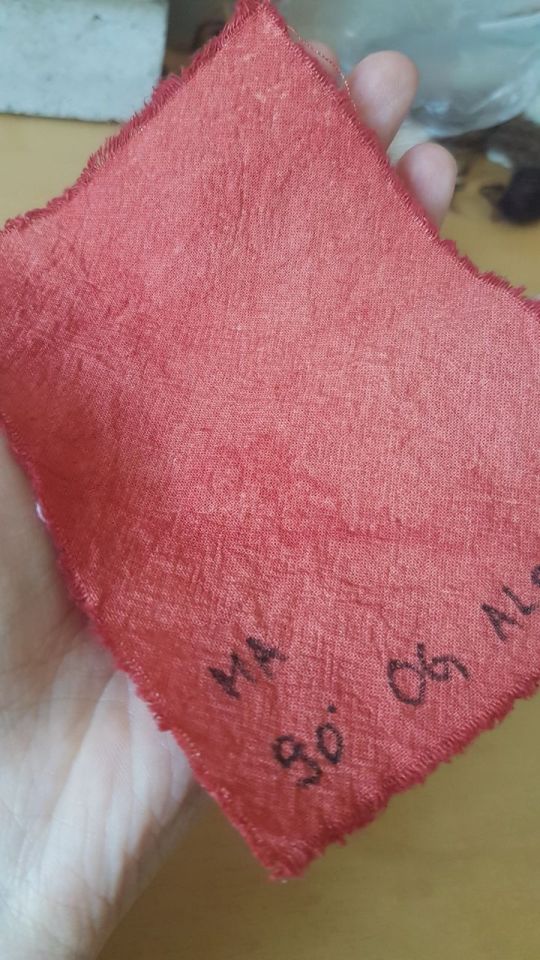
Vergleich SC und 90°
Allgemein lässt sich feststellen, dass die Färbung bei 90° sogar gleichmässiger ausgefallen ist als bei SC, was vielleicht auch auf meine tendenziell zu kleinen Pötte zurückzuführen ist. Zudem hat die leicht aufhellende - in diesem Fall auch minim gräulichmachende Wirkung der 90° Wäsche die Farbnuance beeinflusst. (logisch: andere Ausgangsfarbe, anderes Resultat)
SOY
Allgemein sehr unregelmässig. Bei PO die dunkelste Farbnuance, bei ON, BI, AS, AP vergleichbar von der Farbtiefe her mit OG ALSA. Meist eine ganz eigene Farbnuance.
RX
Generell von Farbtiefe und Nuance her vergleichbar mit NM
Vergleich ALSA vs OG ALSA (ST)
MA, ON, PO und OAK: vergleichbar, vielleicht fehlt der gelbliche OG Unterton aber sonst nicht gross anders.
bei AP und BI sehe ich den Unterschied etwas stärker, aber nicht viel, nur bei AS erscheint er mir signifikant, bzw. ist OG ALSA (st) deutlich tiefer.
Vergleich OG ALSA und OG ALSA STeeped
gleich bei ON, OAK, AS, PO, MA, AP
nur bei BI hat es die Farbe vertieft.
Erwähnte Quellen
maiwa.com
The Art and Science of Natural Dyes - Joy Boutrup, Catharine Ellis
Eco Colour - India Flint
Botanical Inks - Babs Behan
Botanical Colour at Your Fingertips - Rebecca Desnos
#natural dyeing#natural dye#plant dye#cotton#dyeing#experiment#sorry english speaking friends who might be curious#its just a boring listing of facts and processes used mostly to refer back to i thought who knows#maybe someone will be interested :)#planning to follow up with light- and washfastness tests hopefully maybe#but todays goal was just to document this and put it up that's enough work wouff#long post
9 notes
·
View notes
Photo
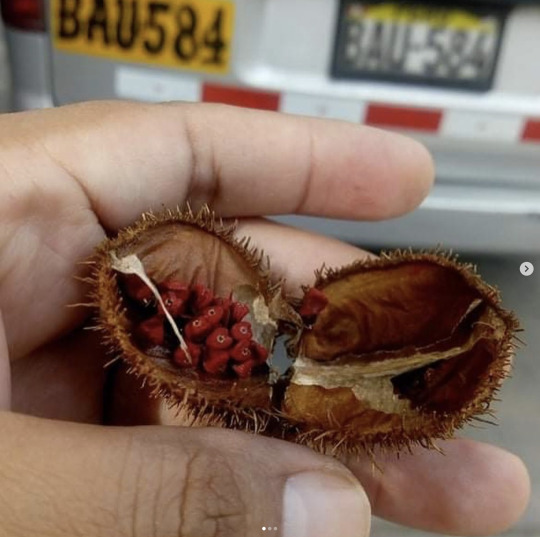
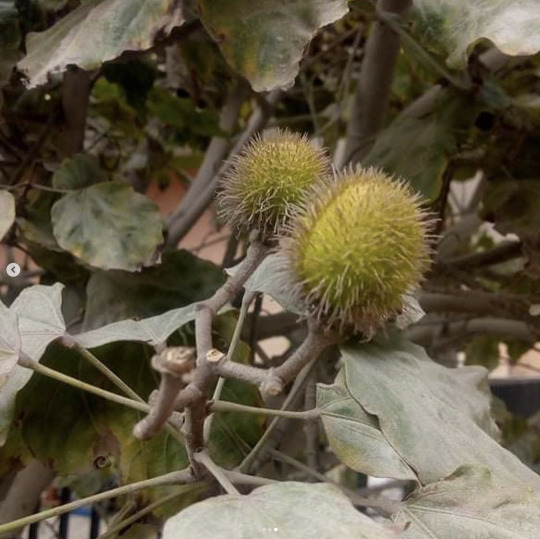
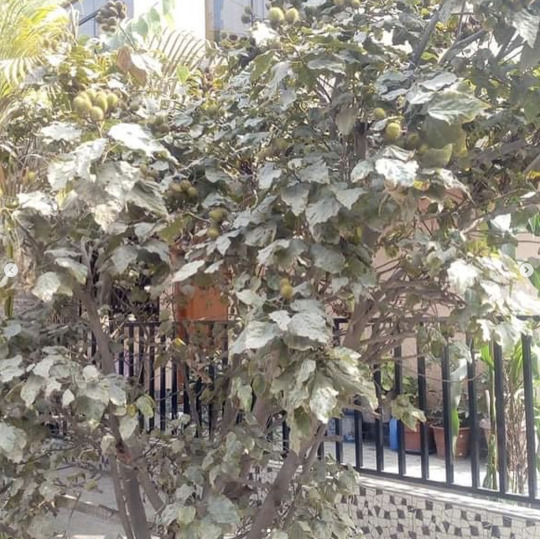
Today we have a special guest post from my friend Esi Sanchez in Peru.
This exotic (for us Europeans!) plant is something you’ve probably eaten many times without knowing it. This plant is the Achiote (Bixia orellana), a shrub native to northern South America and Mexico. Its spiky seed pods contain seeds with vibrantly hued waxy red arils (seed covering). The seeds are ground to obtain a crimson dye that’s safe for food and cosmetics. Many traditional recipes use achiote, such as the Yucatan dish conchita pibil, and indigenous people have used achiote as body paint and makeup since Pre Colombian times.
If you see “annatto “ on the ingredients list of processed foods, you’re eating a safe, natural food dye made from achiote.
#katia plant scientist#plants#botany#economic botany#bixia#bixia orellana#conchita pibil#achiote#red dye#natural colours#natural dyes#natural food dye#red#plant dye#all natural#peru#peru nature#south america#arils#native american culture#indigenous american#annatto#plant facts#plant biology
6 notes
·
View notes
Photo
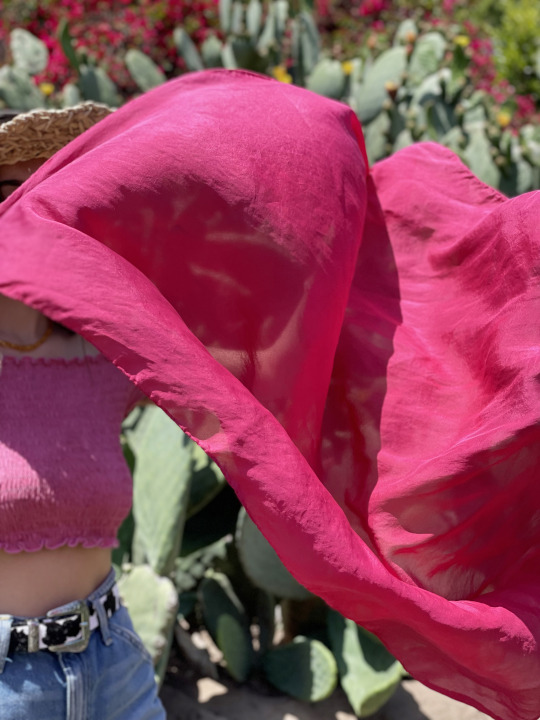
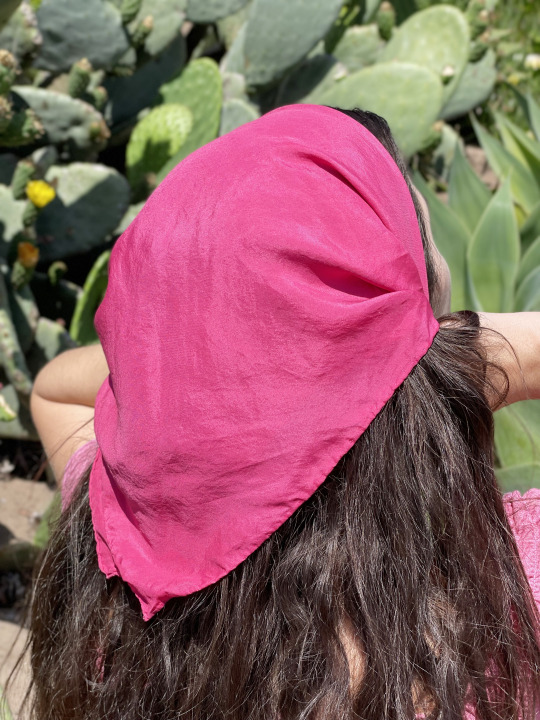
cochineal
3 notes
·
View notes
Text
#plant dye#natural dye#tartan#textiles#loom weaving#Scottish tartan#wool technologies#international fibre nerds
2 notes
·
View notes
Text
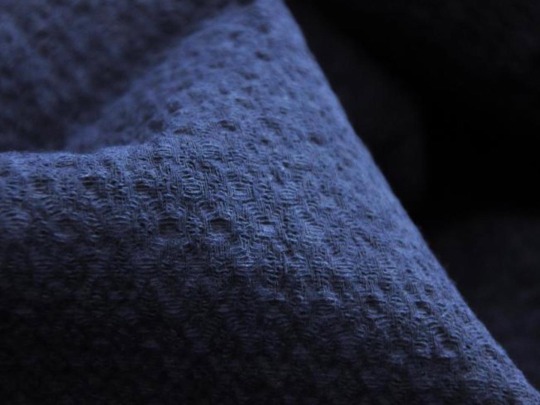
New Sofa cover Indigo blue thick fabric 💙
The first kind of Sofa cover was sold out long times ago. And the fabric was not product, so we don’t sell any sofa fabrics after that time.
It is hard to found this thick fabric with the textures. It is suitable for the sofa cover or other thickness clothing.

#indigo#shibori#blue#etsy#handmade#tie dye#vintage#natural hand dye#etsyfinds#plant dye#blue and white#indigo fabric#fabric#plant dyes#tie dyed#hand dye#thealese#love indigo#sofa fabric#thick fabric#thick indigo fabric#indigo sofa#blue sofa
3 notes
·
View notes